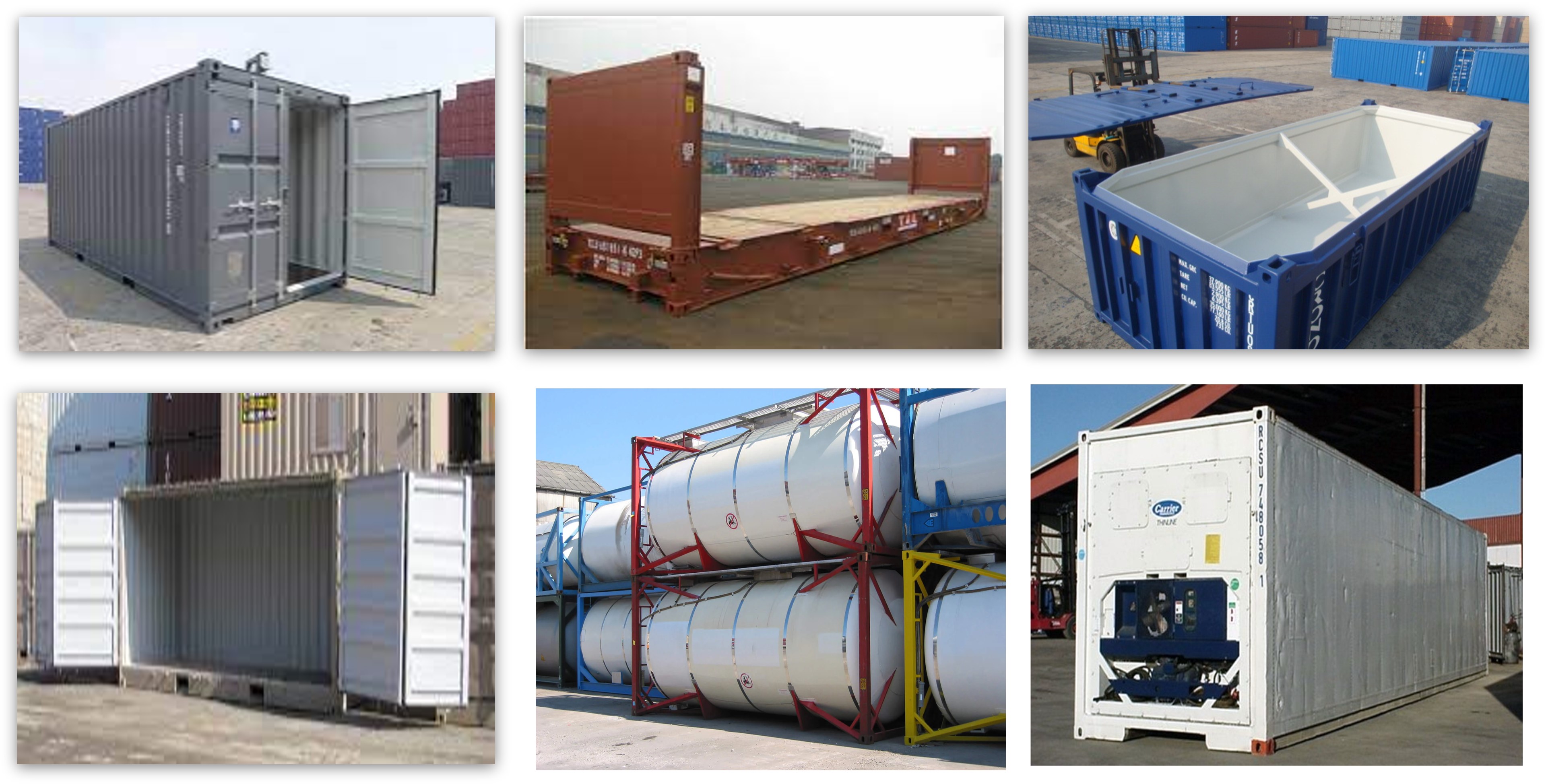8.12 Types of Containers
- Dry Storage Containers:
These containers are some of the most common in the industry. They are designed to transport dry goods. These containers do not allow for temperature controls, so they are not suited for moving food or chemicals that require refrigeration.
- Flat Rack Containers:
Flat rack containers are ideal for shipping boats, cars and other heavy machinery. These containers do not have a top and two of their sides may be optional. Often times, the sides of the containers are either collapsible or detachable.

(#fig:Figure 8.9)Types of Containers
- Open Top Containers:
These containers have an open top to allow for ease of bulk cargo loading. During shipping a roof structure may be secured to the container via ropes to protect against precipitation.
- Open Side Containers:
Open side containers are used for cargo that would otherwise not fit through the standard door openings of a dry storage container. The side swings open as if it was made of two large doors, but it can still be secured to protect the merchandise inside.
- Tanks:
Tanks are designed to retain liquids, especially fuels. They are typically constructed out of anti-corrosive materials because of the harsh chemicals they carry.
- Refrigerated Containers:
Refrigerated containers have temperature controls so goods can be kept at a specific temperature during transport. They are well insulated to ensure that the climate remains consistent. These containers allowed for a wider range of shippable cargo.